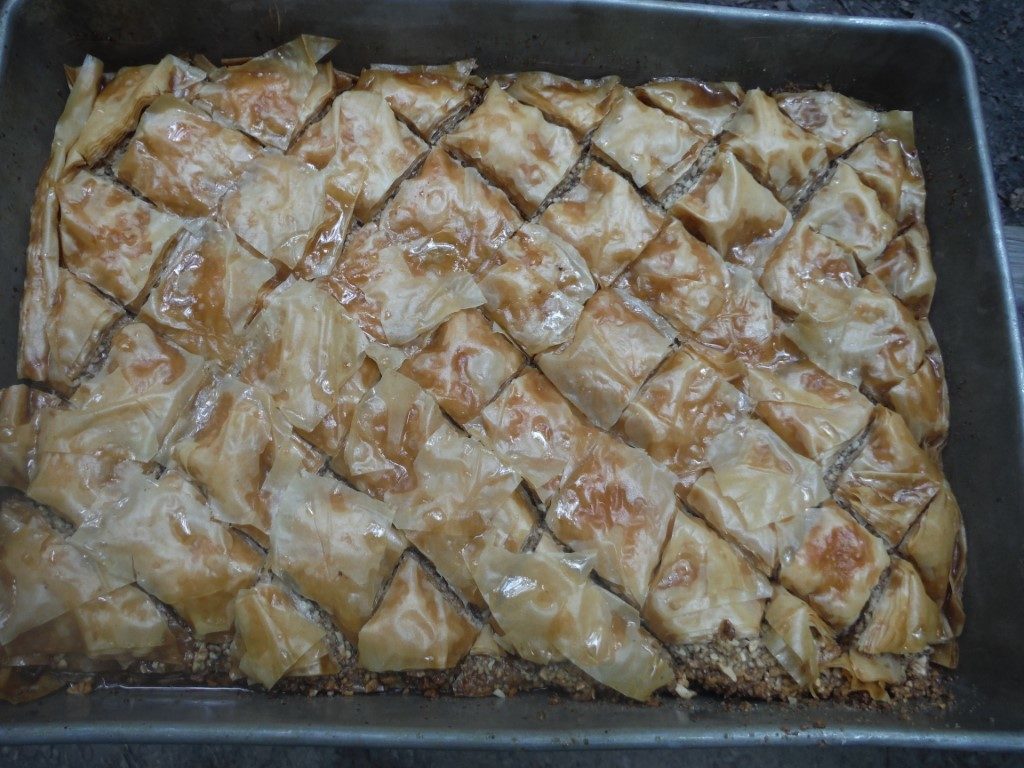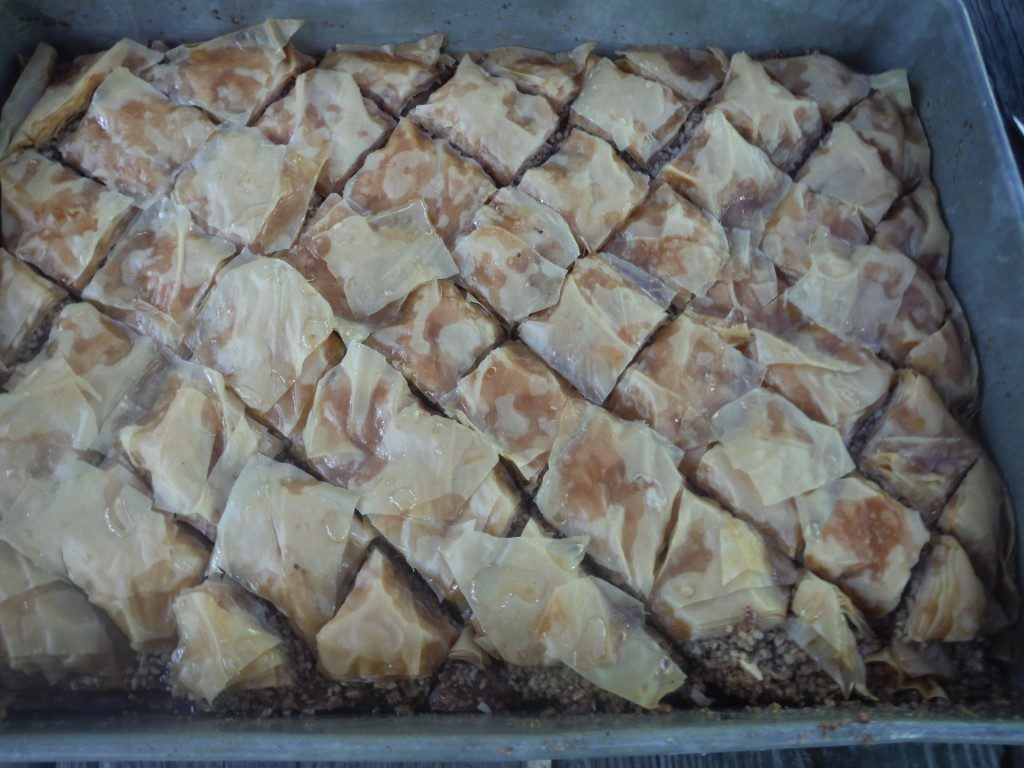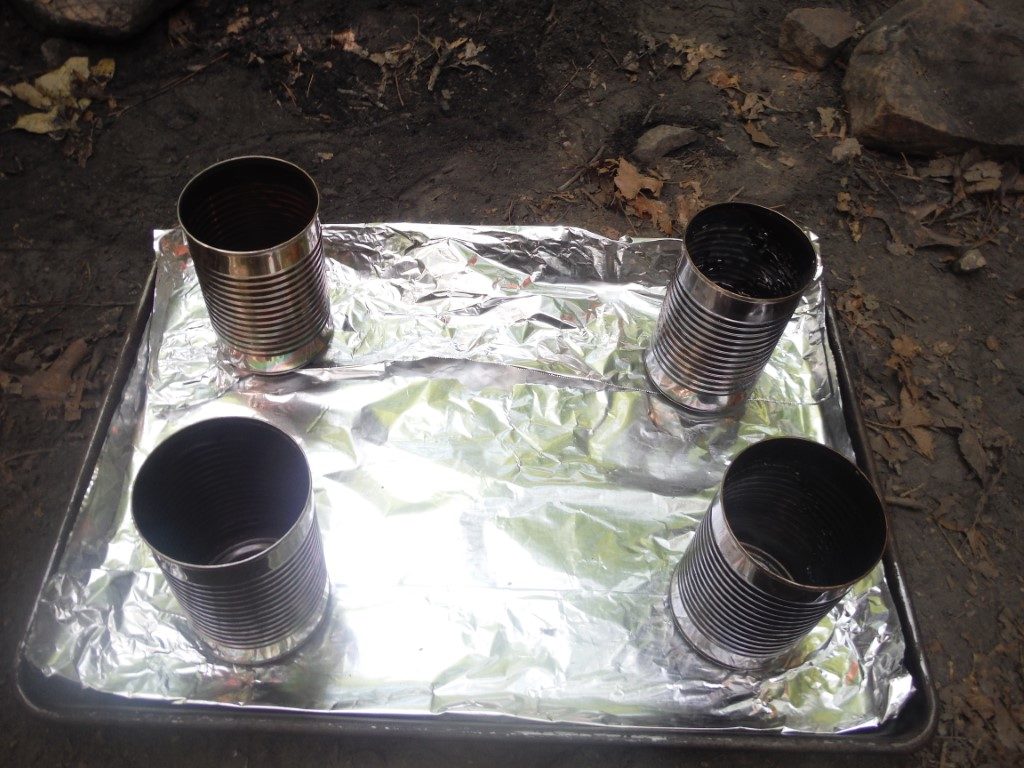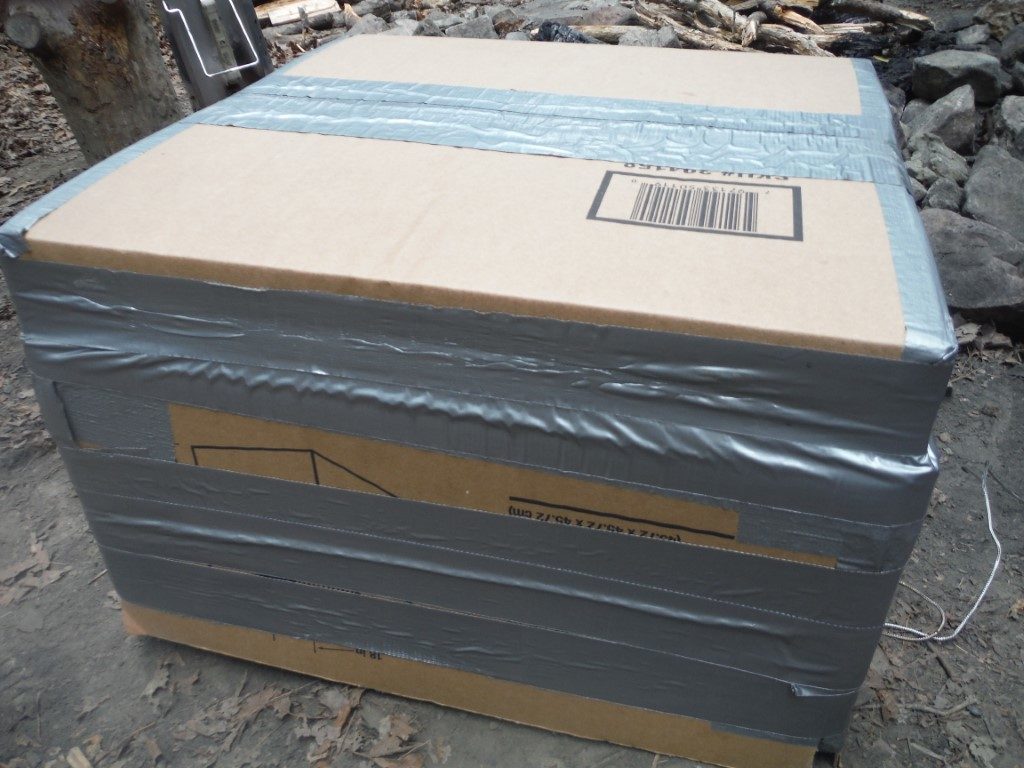I have three times made baklava on camping trips, mainly to show that it is possible to make something while camping that most people would think is impossible. The second and third times were at summer camp as part of the Scoutmmaster cook-offs. A year ago, I made baklava at Camp Powhatan as my entry in the Scoutmaster Cook-off. It came in first, and was also enjoyed at a Leader Ice Cream Social in the afternoon and by the troop as a late evening dessert. (A pan of baklava makes around 30 servings!) This last week, I made an enhanced version at Camp T. Brady Saunders, which also won the Scoutmaster cook-off and was enjoyed by the troop as a late evening dessert.
This version, was taken from Bernard Clayton, Jr.’s The Complete Book of Pastry, Sweet and Savory and was invented by a neighbor of the author as a time-saving way to make lots of trays of baklava at one time. The key idea was that rather than laboriously spreading butter on many layers of phyllo, the baklava could be assembled dry (i.e. with no fat), scored, and then the fat added in the form of oil poured into the cuts in the phyllo. I can now testify that this works as promised.
The enhancement for my second version in camp was to substitute ghee (clarified butter) for the vegetable oil. It did work well, but the one caveat is to remember that butterfat is a solid until 90-100 degrees, and therefore the ghee needs to be slightly warmed before it can be poured into the cracks in the baklava.
Assembling the baklava dry, and then adding the oil, made this a lot easier to do in camp, where clean space is hard to get. It is important to use a solid aluminum pan vs. a disposable aluminum foil pan, since there is danger of puncturing a foil pan when the unbaked baklava is cut.
I used Athens brand phyllo, which had about 40 sheets which were 9 x 14 inches, and I baked in a 9 x 13 inch jelly roll pan. Sometimes phyllo is in other sizes (such as 11 x 17) in which case it will need to be cut or folded.
Pastry
1 lb. phyllo dough
4 cups finely chopped walnuts
1 cup finely chopped almonds
1 cup sugar
2 tsp. ground cinnamon
1 cup vegetable oil or ghee
Cooking spray, optional
Syrup
2-1/2 cups sugar
2 cups water
8 whole cloves
5 cinnamon sticks
¾ cup honey
2 Tbs. lemon juice
Mix together the walnuts, almonds, sugar, and cinnamon. (If camping, put them in a ziplock baggie.)
Grease a 9 x 13 inch baking dish with a the cooking spray. Put about 1/5 of the phyllo leaves in the pan. Cover with about ¼ of the nut mixture. Put another 1/5 of the phyllo leaves, topped by another ¼ of the nut mixture. Repeat until there are 5 phyllo layers separated by 4 nut mixture layers. Neaten up the top as necessary so that it looks attractive. Lightly oil the top of the phyllo with a little of the vegetable oil or with cooking spray to keep the phyllo from sticking to your fingers during the next step, which is to cut the unbaked pastry into small diamond shapes. Using a sharp knife, cut a series of parallel lines about an inch apart, first in one diagonal, and then from another direction to form diamonds. Try to cut completely through the layers. Pour the oil slowly into all of the cuts in the pastry, and allow the oil to soak in for at least 10 minutes. (At camp, I let it soak while I started the charcoal fire.)
Here is what the unbaked pastry looks like after the oil has been poured on it.
Bake at a 325 oven for 60-75 minutes until done. At camp, I used a cardboard box oven, in which there was a baking sheet on the bottom for the hot coals, cans to raise the baking dish above the coals,
and a metal grid on top of the cans as a platform for the pan. I brought an oven thermometer, and added and removed coals to maintain the temperature inside the cardboard box at around 325 degrees. (I started with about 20 lit coals).
While the baklava is baking (or at home if making at camp), make the syrup. Add the sugar, water, cloves, and cinnamon sticks to a sauce pan. Bring to a boil and then reduce to a simmer for about 10 minutes, until it has thickened slightly. Remove from the heat, and add the honey and lemon juice and stir. (If making at home, allow the syrup to cool, and then put it into two rinsed soda bottles, with 2/3 in one bottle and 1/3 in the other.)
When the pastry is done, remove it from the oven and slowly pour 2/3 of the syrup in the cuts of the pastry. Wait about an hour for the first batch to fully soak in, and then slowly pour the remaining 1/3 of the syrup into the cracks. Allow to rest at cool room temperature at least another hour for the second batch of syrup to soak in. After that the baklava can be served, although Bernard Clayton states that it is even better if allowed to rest and meld overnight.





